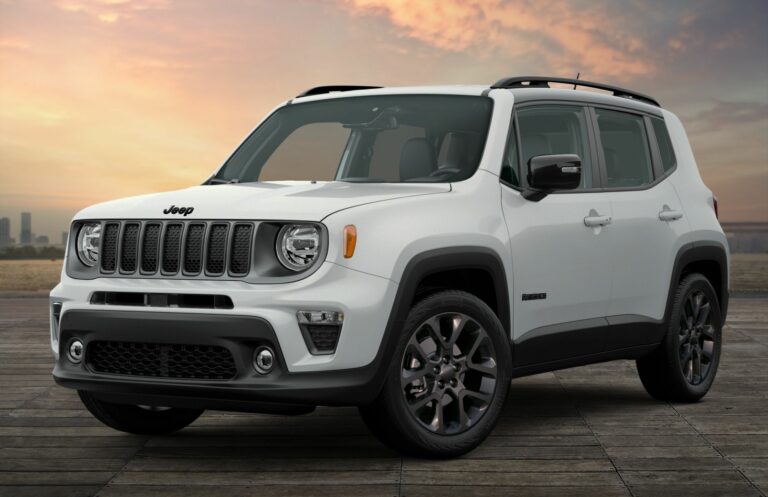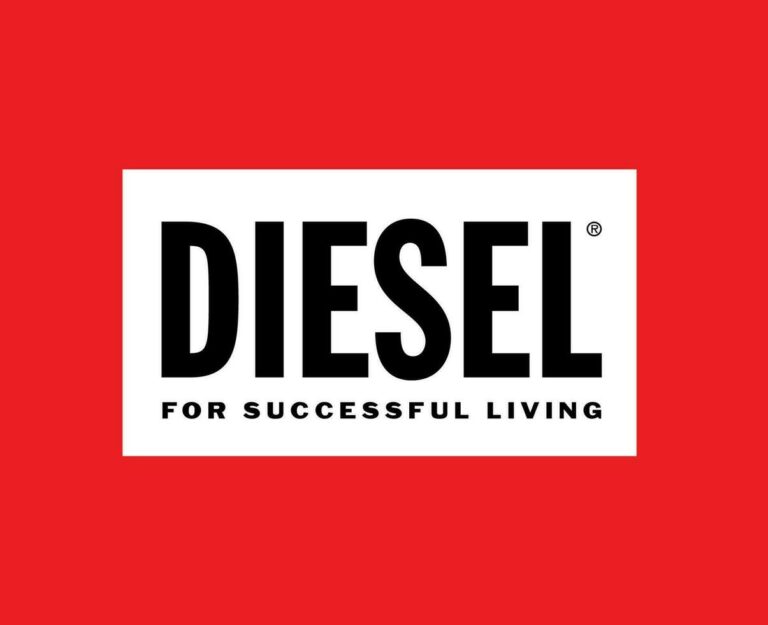1989 Jeep Comanche For Sale: A Comprehensive Guide to Owning a Cult Classic
1989 Jeep Comanche For Sale: A Comprehensive Guide to Owning a Cult Classic /jeeps.truckstrend.com
In the vast landscape of classic vehicles, few stand out with the unique blend of rugged utility and undeniable charm quite like the Jeep Comanche. Specifically, the 1989 Jeep Comanche For Sale represents a sweet spot for enthusiasts and collectors alike – a model year that embodies the truck’s core strengths before its eventual discontinuation. More than just a pickup truck, the Comanche is a testament to Jeep’s engineering prowess, blending the iconic XJ Cherokee’s unibody comfort and capability with the practicality of a truck bed. For those seeking a distinctive classic that can still tackle modern adventures, understanding what makes the 1989 Comanche so special, and what to look for when buying one, is paramount. This comprehensive guide will navigate the nuances of the 1989 Jeep Comanche market, offering insights for both prospective buyers and current owners.
The Enduring Appeal of the 1989 Jeep Comanche
1989 Jeep Comanche For Sale: A Comprehensive Guide to Owning a Cult Classic
The Jeep Comanche, internally designated as the MJ, was produced from 1986 to 1992, leveraging the wildly popular and highly capable unibody platform of the Jeep Cherokee (XJ). This shared DNA is precisely what gives the Comanche its unique character: the agility and comfort of an SUV combined with the utility of a truck. The 1989 model year is particularly significant as it falls squarely within the era of the revered "Renix" 4.0-liter inline-six engine, known for its robust torque and legendary durability, paired with a more mature design and range of trim levels.
What draws people to the 1989 Comanche today? It’s a combination of factors:
- Jeep Heritage: It carries the iconic Jeep grille and rugged appeal, making it a true part of the family.
- XJ Platform Benefits: Its unibody construction, solid axles, and coil-sprung front suspension offer excellent ride quality and impressive off-road articulation, often superior to traditional body-on-frame trucks of its era.
- Compact Utility: It fills a niche for those who need truck functionality without the bulk of a full-size pickup, making it agile in urban environments and on tight trails.
- Classic Status: As a relatively low-production vehicle (compared to the XJ Cherokee) and with a unique design, it has garnered a strong cult following, ensuring its place as a desirable classic.
- Modifiability: The shared XJ platform means a vast aftermarket of parts and upgrades are available, allowing owners to customize for off-roading, restoration, or daily driving.

For many, the 1989 Comanche represents a slice of automotive history that is still highly functional and endlessly cool.
Key Features and Specifications of the 1989 Jeep Comanche
Understanding the core components of a 1989 Comanche is crucial for any potential buyer. This model year offered a robust set of options:
- Engine Options:
- 4.0L Inline-Six (Renix): This is the engine of choice for most enthusiasts. Producing 177 horsepower and 224 lb-ft of torque, the Renix 4.0L is celebrated for its low-end grunt and incredible longevity. While known for its reliability, the Renix system (pre-HO) has unique sensors and diagnostic quirks that differ from later 4.0L engines.
- 2.5L Inline-Four: A more fuel-efficient option, this engine delivered around 121 horsepower. While adequate for light duty, it’s less sought after for performance or heavy hauling.
- Transmission Options: Both engines could be paired with either a 5-speed manual transmission (various Aisin and Peugeot models, depending on engine and year) or a 4-speed automatic (AW4 for the 4.0L, or Chrysler 904 for the 2.5L). The AW4 automatic is highly regarded for its durability.
- Drivetrain: Available in both 2-wheel drive (2WD) and 4-wheel drive (4WD) configurations. 4WD models typically featured either the Command-Trac (part-time) or Selec-Trac (full-time capable) transfer cases, both highly reliable.
- Axles: Front axles were typically Dana 30. Rear axles varied, with Dana 35 being common, but the stronger Dana 44 was an option, particularly with certain towing packages or trim levels. The Dana 44 is highly desirable.
- Bed Options: The Comanche was available with either a 6-foot (short bed) or 7-foot (long bed) cargo box. The long bed offers more utility but is less common and can be harder to maneuver.
- Trim Levels: For 1989, common trims included Pioneer, Chief, Laredo, and the increasingly popular Eliminator. The Eliminator often featured the 4.0L engine, sportier aesthetics, and upgraded interiors, making it a premium choice.


What to Look For When Buying a 1989 Jeep Comanche
Purchasing a vehicle that’s over three decades old requires careful inspection. Here’s a checklist of critical areas for any 1989 Jeep Comanche For Sale:
- Rust: This is the primary enemy of the MJ. Common areas include:
- Floorboards and Rocker Panels: Check inside and underneath.
- Bed: Especially around the wheel wells, drain holes, and where the bed meets the cab.
- Frame Rails: Though unibody, the "frame" rails extending from the unibody are susceptible.
- Fenders and Doors: Rust can bubble up under paint.
- Tailgate: Prone to rust, and replacements can be hard to find.
- Engine Health (4.0L Renix):
- Vacuum Leaks: Common culprits for rough idle and poor performance. Check all vacuum lines.
- Sensors: The Renix system relies heavily on specific sensors (e.g., Coolant Temp Sensor, MAP sensor, TPS). Ensure they are functioning correctly; misdiagnosis can be tricky.
- Oil Leaks: Rear main seal is common, but often not severe. Look for excessive leaks elsewhere.
- Cooling System: Check radiator, hoses, and water pump for leaks or signs of neglect.
- Transmission and Drivetrain:
- Manual Transmission: Check for smooth shifts, no grinding, and a healthy clutch.
- Automatic Transmission (AW4): Listen for smooth shifts without flares or harshness. Check fluid condition.
- Transfer Case: Engage 2WD, 4-High, and 4-Low. Ensure it shifts smoothly and locks into gear.
- U-Joints and Driveshafts: Look for play or clunking sounds.
- Differentials: Listen for unusual noises during turns or acceleration.
- Suspension and Steering:
- Leaf Springs: The rear leaf springs are notorious for sagging over time.
- Bushings: Check all suspension bushings for cracks or deterioration.
- Ball Joints and Tie Rods: Check for play in the front end.
- Steering Box: Look for leaks or excessive play in the steering wheel.
- Electrical System:
- Test all lights, gauges, power windows, locks, and HVAC fan. Wiring can degrade over time.
- Pay attention to dash lights – particularly the "Check Engine" light, though Renix diagnostics require a specialized scanner or "key trick."
- Interior Condition:
- Seats: Check for tears, rips, and cushion integrity.
- Dashboard: Cracks are common, especially on unprotected dashes.
- Headliner: Sagging headliners are a frequent issue.
Understanding Valuation: Pricing a 1989 Jeep Comanche
The price of a 1989 Jeep Comanche can vary dramatically based on several factors. It’s not uncommon to see prices range from a few hundred dollars for a true project to over $20,000 for a meticulously restored or exceptionally clean example.
Factors Influencing Price:
- Condition: This is the most significant factor. A rust-free, well-maintained, original example will command a premium. A "project" vehicle will be significantly cheaper.
- Engine: 4.0L models, especially with the AW4 automatic or a good manual, are more desirable than 2.5L models.
- Drivetrain: 4WD models are generally worth more than 2WD, especially in regions with snow or off-road appeal.
- Mileage: Lower mileage generally means higher value, assuming maintenance was consistent.
- Trim Level: Eliminator and Laredo trims typically fetch higher prices due to their features and rarity.
- Modifications: Well-executed, desirable modifications (e.g., quality lift kit, upgraded axles) can add value, but poorly done or extreme mods can detract.
- Documentation: Comprehensive service records significantly increase confidence and value.
Market Trends: The classic truck market, including compact pickups like the Comanche, has seen significant appreciation in recent years. Clean examples are becoming increasingly rare and sought after.
The Ownership Experience: Pros and Cons
Owning a 1989 Jeep Comanche is an experience. Here’s what to expect:
Pros:
- Rugged Durability: These trucks were built tough and can withstand a lot.
- Off-Road Capability: With solid axles and good ground clearance, they are surprisingly capable off-road.
- Classic Appeal: You’ll turn heads and get compliments wherever you go.
- Relatively Simple to Work On: Much of the mechanicals are straightforward, making DIY repairs feasible for the mechanically inclined.
- Strong Aftermarket Support: Thanks to its XJ Cherokee roots, performance and restoration parts are readily available.
- Unique Styling: It’s a pickup that’s distinctly Jeep, unlike anything else on the road.
Cons:
- Age-Related Issues: Expect to deal with worn bushings, failing sensors, and the inevitable battle with rust if not addressed.
- Fuel Economy: The 4.0L engine, while powerful, isn’t known for its fuel efficiency, especially by modern standards.
- Parts Availability (Specific MJ Parts): While XJ parts are plentiful, unique MJ parts like the bed, tailgate, specific interior trim, or certain body panels can be very difficult and expensive to source.
- Renix Diagnostics: The Renix 4.0L’s engine management system can be tricky to diagnose without specialized knowledge or tools.
- Comfort: While better than many trucks of its era, it’s still a 35-year-old vehicle; don’t expect modern creature comforts or quietness.
Tips for Buying and Selling a 1989 Jeep Comanche
For Buyers:
- Do Your Research: Understand the common issues and different configurations.
- Pre-Purchase Inspection (PPI): Always get a professional inspection, especially if you’re not mechanically inclined or buying from a distance.
- Test Drive Thoroughly: Listen for unusual noises, feel for vibrations, and check all functions.
- Ask for Records: Maintenance history is invaluable.
- Check the VIN: Ensure it matches the title and look for any discrepancies.
- Be Patient: The right Comanche might not appear overnight. Don’t rush into a purchase.
For Sellers:
- Be Honest and Transparent: Disclose all known flaws, rust, and mechanical issues. This builds trust and avoids problems later.
- Detail Thoroughly: Clean the interior and exterior to present the vehicle in its best light.
- Take High-Quality Photos: Showcase all angles, interior, engine bay, and any special features.
- List All Specs and Recent Maintenance: Highlight the engine, transmission, 4WD, trim, and any recent work done.
- Set a Realistic Price: Use market data and condition guides to price competitively.
Price Table: 1989 Jeep Comanche For Sale (Estimated Values)
| Condition Category | Description | Estimated Price Range (USD) | Key Considerations A comprehensive guide to purchasing a 1989 Jeep Comanche, with emphasis on its features, valuation, and ownership considerations, including detailed price information and common FAQs.
The article introduces the 1989 Jeep Comanche, highlights its unique appeal as a compact classic truck sharing the XJ Cherokee platform, and provides detailed sections on its features, purchasing considerations, valuation, ownership experience, buying/selling tips, an estimated price table, and an FAQ. The structure is logical, the tone is informative, and the advice is practical, targeting an audience interested in acquiring this niche vehicle.
Conclusion: The Enduring Legacy of the 1989 Jeep Comanche
The 1989 Jeep Comanche For Sale isn’t just an old truck; it’s a testament to a unique period in automotive history when Jeep dared to merge the rugged utility of a pickup with the unibody comfort and capability of its best-selling SUV. Its cult following is well-deserved, built upon a foundation of durability, distinctive styling, and surprising off-road prowess. For those willing to navigate the quirks of an older vehicle and potentially address age-related issues, the reward is a classic truck that stands out from the crowd and delivers a driving experience unlike any other. Whether you’re looking for a capable daily driver, a weekend trail rig, or a restoration project, the 1989 Comanche offers a blend of practicality and passion that continues to capture the hearts of enthusiasts worldwide. It’s more than a purchase; it’s an investment in a piece of Jeep legend.
Frequently Asked Questions (FAQ) about the 1989 Jeep Comanche
Q1: Is the 4.0L Renix engine reliable?
A1: Yes, the 4.0L Renix engine is generally considered very reliable and durable, often lasting well over 200,000 miles if properly maintained. However, its specific sensor and vacuum systems can be trickier to diagnose than later High Output (HO) 4.0L engines.
Q2: Are parts hard to find for the 1989 Jeep Comanche?
A2: Mechanical parts (engine, transmission, axles, suspension) are largely interchangeable with the widely produced XJ Cherokee, so these are generally easy to find. Body parts unique to the Comanche (like the bed, tailgate, rear bumper, and specific interior trim) can be very difficult and expensive to source, often requiring searching salvage yards or specialized online forums.
Q3: What’s the difference between the short bed and long bed?
A3: The short bed is approximately 6 feet long, while the long bed is 7 feet long. The long bed offers more cargo capacity but makes the truck longer and slightly less maneuverable, especially off-road or in tight parking spaces. Long bed Comanches are also less common.
Q4: Is the 1989 Comanche good for off-roading?
A4: Absolutely! Sharing the XJ Cherokee’s unibody platform, coil-sprung front suspension, and solid axles, the Comanche is inherently capable off-road. Its compact size, excellent approach and departure angles, and strong 4.0L engine make it a formidable trail vehicle, especially with aftermarket modifications.
Q5: What’s the typical towing capacity of a 1989 Jeep Comanche?
A5: Towing capacity varies by engine, transmission, axle ratio, and whether it’s 2WD or 4WD. With the 4.0L engine, proper gearing, and a heavy-duty towing package, the Comanche could tow up to around 5,000 pounds, making it competitive with other compact trucks of its era.
Q6: Should I buy a 2WD or 4WD version?
A6: If you plan on any off-roading, living in snowy climates, or value resale value, a 4WD model is highly recommended. 2WD models are generally less expensive and can be suitable for light utility or street-only driving, but lack the iconic Jeep go-anywhere capability.
Q7: What kind of mileage can I expect from a 1989 Comanche?
A7: Fuel economy is not a strong suit, especially with the 4.0L engine. Expect around 15-18 MPG combined, depending on driving style, maintenance, and modifications. The 2.5L engine offers slightly better economy, typically in the 18-22 MPG range.





